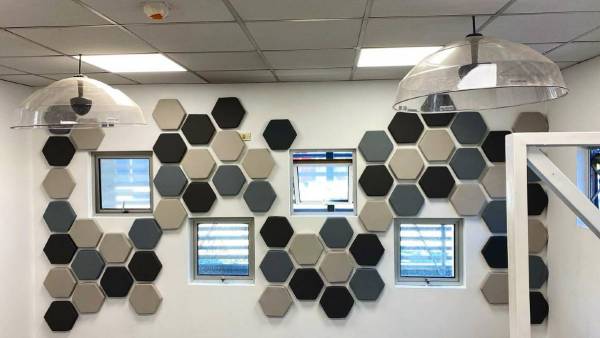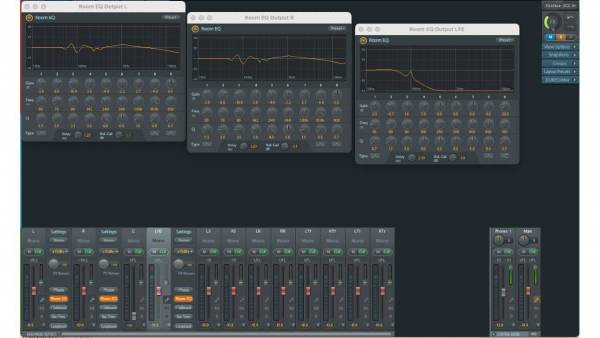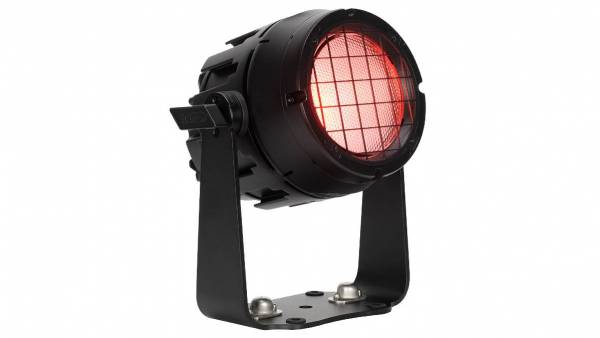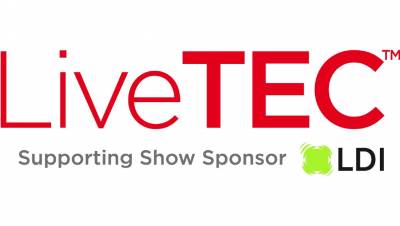by Julián Arcila
Users of video projection systems, including the Latino public, are currently facing a technological maelstrom, since every day the number of references available for a market that constantly becomes more competitive and faces different threats increases, mainly from niches that are gaining ground such as plasma and LCD screens.
However, the battle could be far from being resolved, as the aforementioned screens gain space on small surfaces, while when what you are looking for is good size a 42-inch plasma has little to do with an 80 screen, which can be achieved with any video projector.
AVI LATINOAMÉRICA spoke with two of the big firms in the business, Dell and Panasonic, but there was also room for a brand like 3M that is making its way strongly into the market, as it has been developing important projects in the south of the United States. The respective officials offered some ideas and characteristics about the region's market and its technological trends, which also contemplate the threats of low-quality and low-priced products.
Even market but with slight inclination
During the last years of political and economic stability, Latin America became an interesting market for the sale of these solutions. However, it can be said that it is an even market in the use of available technologies, each with its own particular focus; it also seems that the region prefers equipment of a certain range of lumens (luminosity).
In addition to the above, there has been a factor that has been decisive for the commercialization of this type of solutions and is the greater development of the region as a business site, which has driven the organization of meetings and commercial meetings of all kinds, a fact that has positively impacted the sale of video projection solutions.
In the opinion of María José Fregoso and Adrián Sánchez, representatives of 3M for Mexico and Peru respectively, the Latin market for 3LCD and DLP projectors is quite even, but they emphasized that the latter are more widespread in the educational segment, while the former are preferred in the corporate part. According to the professional, "definitely a critical factor in the region is the price, and you could penetrate the market more with a low-price projector, good attention to the end user and a computer with input for USB reader. Another important element is that of security, in which it is ideal that the projector has some element to fix the equipment".
It is important to note that about 50% of the sales of this company in the region (which manufactures both technologies) are destined for the education segment.
But an important feature of the Latin market is that it is increasingly inclined towards solutions that offer several features in a single package and that can be used both in small and medium rooms, as well as in office environments, all with a high mobility component. "We see that there is a growing demand for more advanced equipment such as for use in auditoriums, universities, projection rooms and specialized events," explained Fernando Lara, dell's projector brand manager for Latin America (they exclusively produce DLP technology).
Another feature of the market is the increasing preference for low-light equipment, this is below 3000 lumens, basically located in the range of 2000/2500 lumens. "In the sector of 4000 lumens upwards there is very little sold in the region, although Mexico is the benchmark at this level. We are the number one in sales in this country of equipment from 5000 lumens up," said Carlos Rendón, Panasonic's display manager for Mexico. He added that the range of 2000 lumens represents about 80% of the sales of this manufacturer in Latin America, with Colombia, Brazil and Peru being the most prominent markets after Mexico.Within the marketing strategy in Latin America, every day the direct sales modality matures, which is Dell's forte, although Panasonic (produces both technologies, but 3LCD is basically intended for small equipment, while DLP is applied in solutions above 4000 lumens) specializes more in marketing through representatives and specialist stores, as is the case in Mexico.
High-impact details
But given the interest that has been taking place in the region for this type of solutions, it is important to take into account some technical factors that weigh when acquiring a video projector.
So, when talking about technical details, we must take into account two aspects that are fundamental when buying: the durability of the bulb and the number of hours that the equipment can spend without requiring maintenance. These two factors become important since the bulb is perhaps the most sensitive element of video projectors and its repair is generally expensive; maintenance is equally onerous and in some cases can be as expensive or more expensive than the projector itself. It is important to note that both DLP and 3LCD systems have been improving to reduce maintenance or repair costs.
About the bulbs it is important to note that they have a limited life (the average would be between 2000 and 5000 hours of operation) and their failure is usually linked to the conditions of use of the equipment. However in 3LCD equipment the change of this device could be done more easily by the user.
Fregoso and Sánchez, from 3M, said that taking into account that the current trend is leaning towards the acquisition of equipment that offers long life in terms of the bulb and also little maintenance, the firm has worked on the development of filters that last up to 4 thousand hours without being cleaned. In addition, to solve the issue of the bulb launched a remote administration system: "in the education sector there is the problem that the projectors are not turned off by users, so as part of the improvement to offer the ideal solution to the market we include our teams this system, with which through the network the operation of the projectors is managed, maximizing lamp life and ensuring optimal use of equipment, regardless of whether it is DLP or 3LCD."
Fernando Lara of Dell, supports the idea that degradation in the operation of the parts of the projectors is highly associated with the conditions of use by the user, so he recommended that "the same user adheres to the manufacturer's recommendations regarding on and off, cooling and operating conditions". On maintenance, he acknowledged that it is a determining factor at present, so he said that his company offers maintenance-free equipment to avoid the customer the increase in costs for carrying out a cleaning procedure.
Panasonic also has its answer to the maintenance issue and for about a year and a half it launched an intelligent filter system called auto rolling filter, in which the filter is always rolling and so when dust falls it is automatically cleaned, leaving a team "like new", according to Carlos Rendón.
What about screens?
This is another crucial element when talking about projectors, as there are some recommendations in front of the screens that should be used; it is possible that the same reader has witnessed occasions in which semi-white walls are used as a projection background when this is not the best alternative to get the most out of this type of equipment.
In this regard, Fernando Lara explained that it is best to use a white surface, as flat as possible and this varies with the use you want to give to the projection. "This depends on what you want to achieve and also if there is any geometric effect that you want to give to the projection. The white surfaces are the ones that allow a better projection and a greater fidelity in terms of the reflection of light and color, "he said.
Rendón agreed with the approach of a specific screen for each application, but summarized by saying that for example for home theater the best option would be a 16:9 format medium; He added that screens differ from walls because the material with which they are built gives a special reflection.
The improvements of recent years
Given that the market for video projectors is increasingly competitive, different manufacturers invest significant resources in their R&D departments, with the aim of offering the market solutions that can meet as many needs as possible, with the minimum investment, and opening the door for the technologies of the future; no less important is to evolve in terms of the image quality offered, one of the strengths of the old cathode ray tube or CRT technology.
And as in the segment of technological competition you can not waste time, 3M has focused on improving four elements that it considers fundamental for the segment: installation, sound, control and combination with multiple sources of information. According to the representatives of the brand, "we offer three different arms for wall mounting, making installation considerably simpler and faster, eliminating costs of wiring to the ceiling (...) We know that speakers are essential for the education sector where various videos are used as an active teaching method, so two powerful speakers of 20 watts each have been introduced. Additionally there is the accessory known as 'IO box', which is a complement that allows you to control the projector from a more accessible point; we also have the addition of various inputs for DVDs, computers, sound, among others. This element was developed in order to replace the remote control that in most cases tends to be lost."
In Dell, for its part, they have focused on maximizing the benefits of technology for the digital processing of light, according to what was expressed by Lara.De the same way, in Panasonic they have developed a system known as daylight view, which has been incorporated into the equipment for about three years. "This is an electronic system that captures the amount of ambient light and through a circuit changes the contrast, the range, the intensity of the colors; it basically self-adjusts with the ambient light captured," Rendón explained.
In conclusion, the video projector segment is growing rapidly and there is a wide range of solutions on the market that vary in prices, from the most comfortable to the most advanced solutions with higher prices.
In general, the professional buyer of video projection solutions must refine their knowledge in the field, so as not to leave aside such important aspects as the reliability, durability and market support of each of the brands available in Latin America, as well as technical elements such as resolution, luminosity contrast ratio, projection aspect and operating temperatures.
What does have to be clear is that the industry for the next five years will significantly increase the requirement of brilliance of the equipment -for just over a year the standard has been revolving around 2000 lumens-; the most positive thing is that everything seems to indicate that to the extent that the luminosity will increase, the costs of the technology will fall.
Technology Journey1
Video projection systems are devices that receive a video signal and project it onto a screen using a lens system, thus allowing the display of still or moving images. They have several image resolutions which include SVGA (800 X 600 pixels), XGA (1024 X 768 pixels), 720p (1280 X 720 pixels) and 1080 (1920 X 1080 pixels). Four projector technologies are currently available:
CRT (Cathode Ray Tube): It is based on the model of the old televisions; it has better color resolution, but it is already out due to its weight and size, in addition to the cost of replacing your bulb.
3LCD: Simpler technology that is based on the use of liquid crystal; in this mode the light is divided into three beams that pass through three liquid crystal panels, one for each primary color: red, green and blue. Its main advantage is greater efficiency than DLP systems, but against it has to present some type of pixelation and that on average its bulb offers a useful life of 2000 hours.
DLP (Digital Light Processing): Technology developed by Texas Instruments, of which there are two modalities, one with a DMD chip (Digital Micromirror Device) and another with three. In this technology each pixel forms a micromirror and with the set of these an array is formed that can let or not pass light to the screen. The light that reaches each micromirror has previously passed through the color wheel, which has to be synchronized with the color that each pixel must represent. Among its advantages are excellent color reproduction, good lamp life and low weight, but against it is that systems with a single DMD chip can generate a rainbow effect when people walk the screen with their eyes.
D-ILA (Direct-drive Image Light Amplifier): Technology developed by JVC and based on LCoS (Liquid Crystal on Silicon). Its main advantage is the excellent color reproduction although the great disadvantage is the enormous cost that these devices have today.
1. Content partially taken from Wikipedia.


























Leave your comment